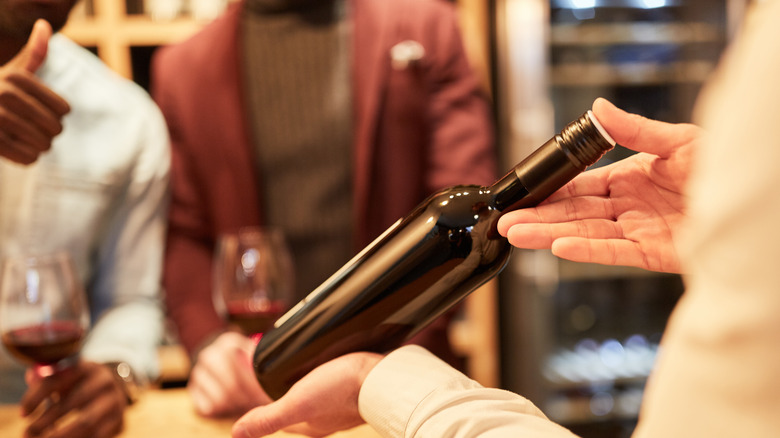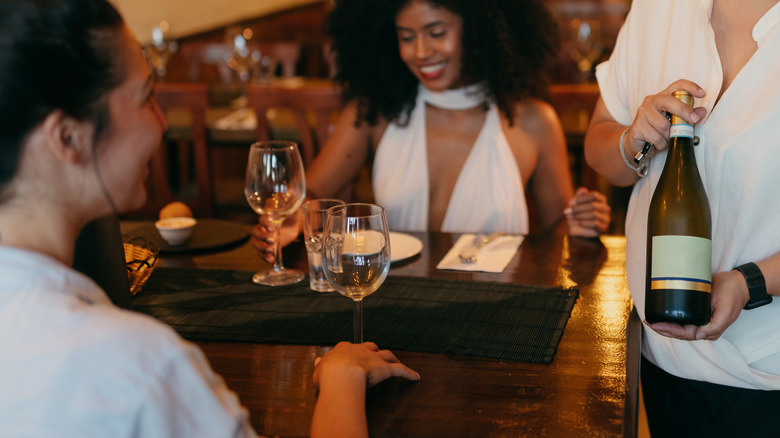What You Should Pay Attention To When A Restaurant Server Presents Bottled Wine
The ceremonial presentation of a wine bottle before a waiter begins to pour a glass for a diner to taste isn't just for show. While the momentary pause allows time for interested wine connoisseurs to snap pictures for photo collections, the presentation has several other functions. We spoke to Scott Mattson, sommelier and co-owner of Nocturne Jazz and Supper Club in Denver, Colorado about the ostentatious tradition. "We present bottles before opening to confirm we've pulled the right bottle for a guest," Mattson explains. "Quite often, wine lists have a number of different wines and vintages from the same producer, and ensuring the correct wine was retrieved for the guest is essential."
For oenophiles who have ordered specific blends from particular vineyards with unique bottling dates, this showcasing allows time for guests to make any necessary corrections. "Make sure the bottle is indeed the wine and vintage you ordered," Mattson advises. "If it's a white, rose or sparkling, this is the moment to ensure the wine has been chilled and ready to enjoy." In other words, don't be shy about speaking up if you see that the temperature of the bottle is not up to snuff.
Show-and-tell served tableside
Once the bottle has been approved, samples have been tasted, and affirmative nods shown that the wine is indeed to the liking of the guests, trained servers should place bottles to the right of the host with the wine label in clear sight. For wines meant to be served chilled, bottles will be set gently into a bucket of ice. Unfortunately, human error is part of life, and the counterfeiting of fine and expensive wines is not an unknown occurrence either, so while this display may seem excessive, the presentation stage is synonymous with high-end wine culture. Such rigmarole helps drinkers ensure that the wine is in fact what it is supposed to be.
Even if you're not regularly in establishments where such performative displays take place — or are not familiar with classic wines, much less finer, more obscure labels — you can take advantage of the opportunity to take photos for your social media feeds. If you're not an active Instagram user, you may want to simply note the label should the blend result in a memory you might want to relive later on with a repeat order.

